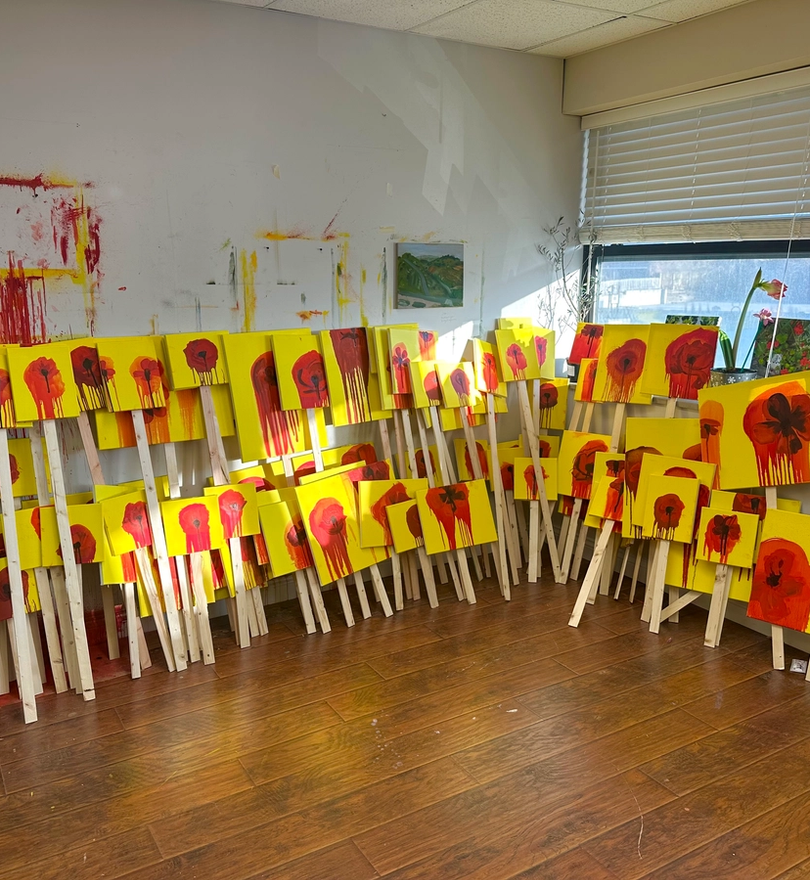
Highlights from our fledgling archive of Aotearoa Asian art, selected by the Satellites archivists.
April saw artists and creatives gather in Te Whanganui-a-Tara Wellington for the 2024 Asian Aotearoa Arts (AAA) programme. Touted as the tenth anniversary of Asian artist gatherings in Aotearoa, it was also the final edition that will be led by artist and educator Kerry Ann Lee and Massey University’s Toi Rauwhārangi College of Creative Arts (CoCA).
To celebrate this poignant milestone, we rifled through the Satellites Archive for moments when Asian communities in Aotearoa have got together to kōrero and build connection — a sort of loose (though far from exhaustive!) history of togetherness, and a patchwork of shared experiences.
As always, let us know if you think of other moments or material we should add to the archive!
2005
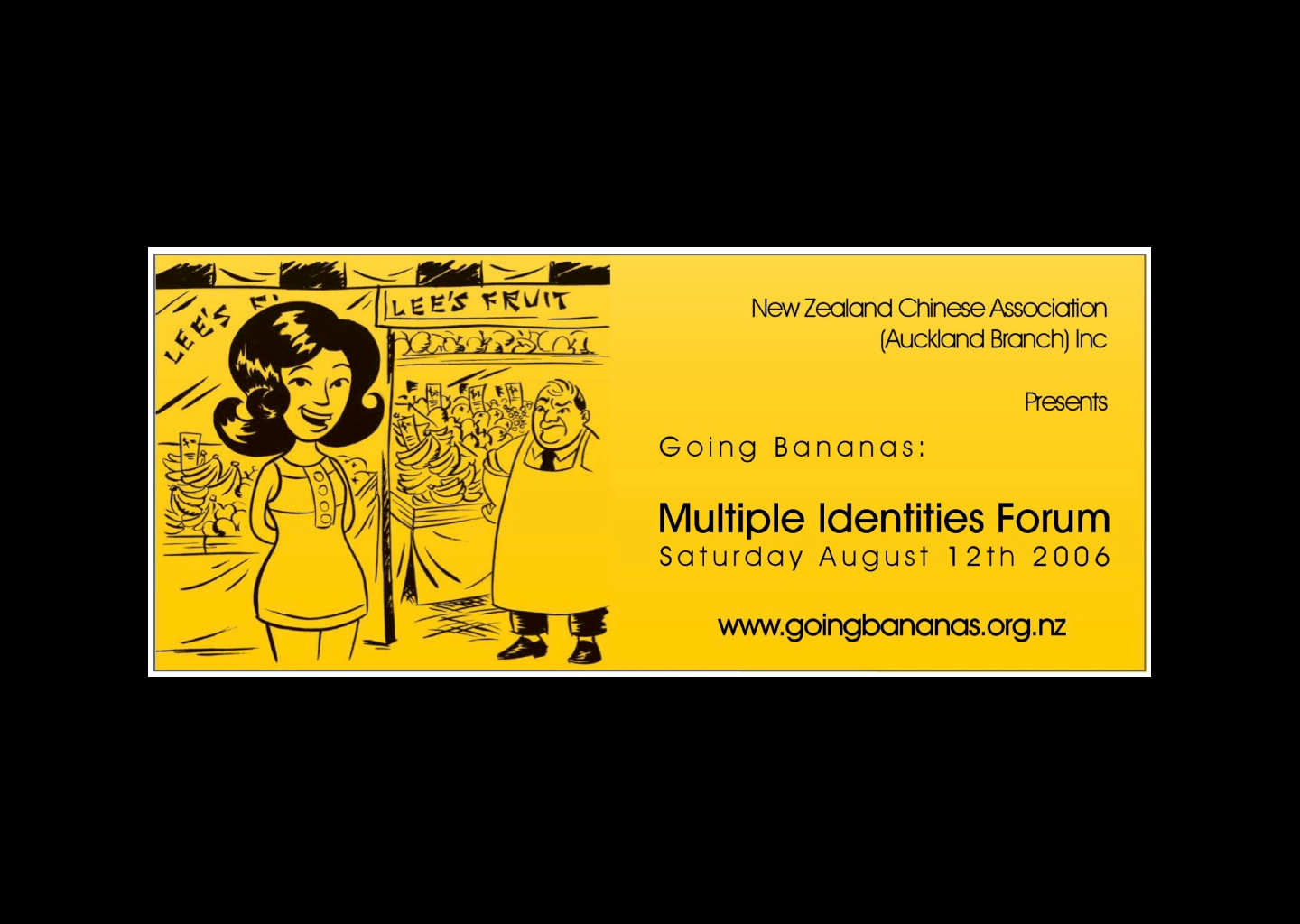
Advertisement for the second Going Bananas conference, printed in the Aotearoa Ethnic Network Journal, 2006
The Banana conferences
‘Banana’ has gone the way of other race-based pejoratives — now seen as a bit self-hating and outdated — but twenty years ago the New Zealand Chinese Association propagated a bunch of banana wordplay when the Auckland branch organised a series of gatherings referred to as the ‘Banana’ conferences.
Held between 2005 and 2014, discussion topics ranged from history to culture, business to the arts, and the programmes were often “rife with interesting and noteworthy juxtapositions” (as Kristen Ng described the 2014 event). Take a closer look in the Satellites archive to count all of the banana-inspired headlines.
2013
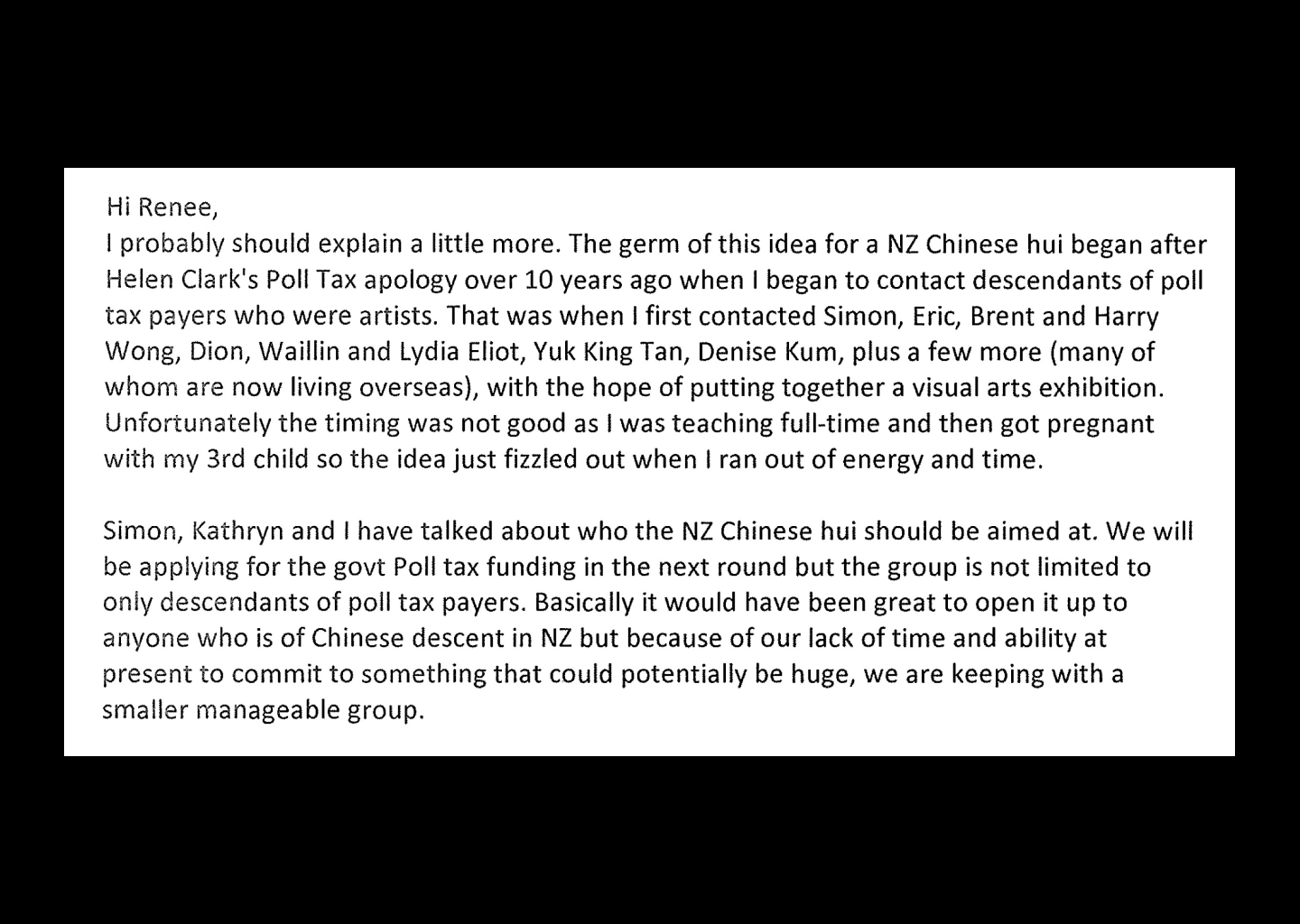
Excerpt of email correspondence between Kim Lowe and Renee Liang, as they planned the 2013 Chinese New Zealand Artists Hui
Courtesy of Renee Liang and Kim Lowe
The Chinese New Zealand Artists Hui
A small intergenerational gathering of Chinese artists at Corban Estate Arts Centre in 2013 was the spark for ongoing gatherings of artists, gradually broadening and evolving into the ‘mega hui’, (the 2018 Asian Aotearoa Arts Hui) later in the decade.
We are lucky to have some invaluable ephemera from the 2013 hui in the Satellites archive: a graphic identity designed by Kerry Ann Lee for an ‘Aotearoa Chinese Artists’ network, the programme for the hui, and email correspondence between the organisers, which overflows with questions that Asian artists have continued to ask at similar gatherings over the decade since!
→ The Chinese New Zealand Artists Hui in the Satellites archive
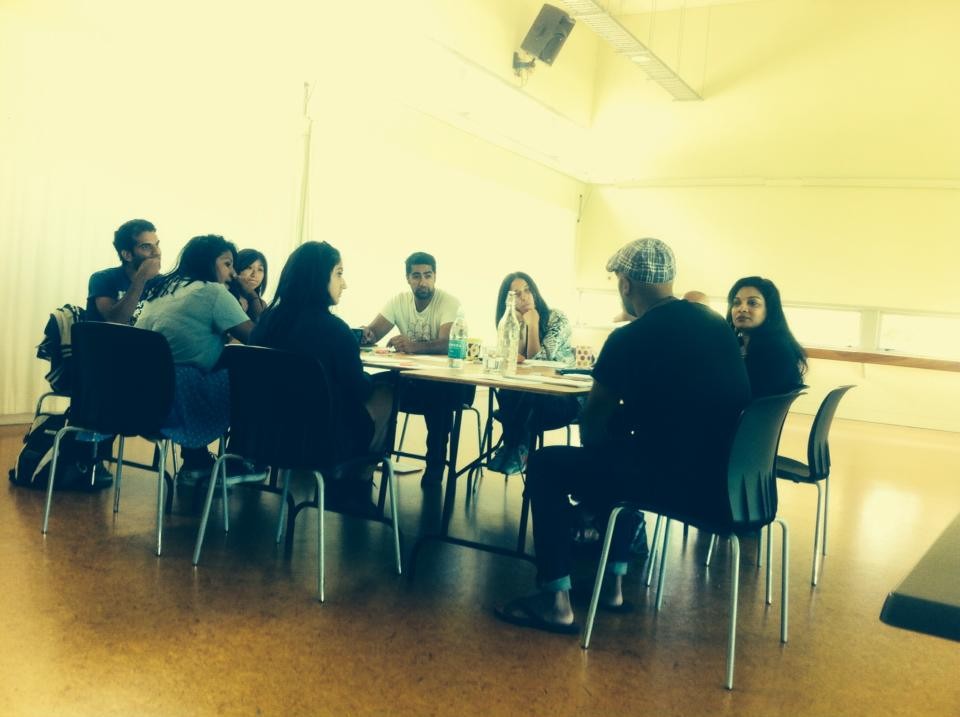
Actors and writers workshopping the play Tea at the 2013 South Asian Writers Festival
The South Asian Writers Festival
It’s interesting how often Asian artists in Aotearoa have looked to Māori and Pasifika arts communities, wistfully admiring more established structures for support and development. The South Asian Writers Festival fits into this category — it was inspired by the Indigenous Canadian development festival Weesageechak Begins to Dance, which had already been adapted in Aotearoa by Tawata Productions with their Matariki Development Festival.
Having participated in the Tawata festival a few times, Ahi Karunaharan initiated the South Asian Writers Festival in 2013, to encourage the development of original works for stage and screen by South Asian writers. Writers were invited to workshop their ideas together, with some of the works, such as Karunahran’s Tea, continuing to be developed and later presented.
→ The South Asian Writers Festival in the Satellites archive
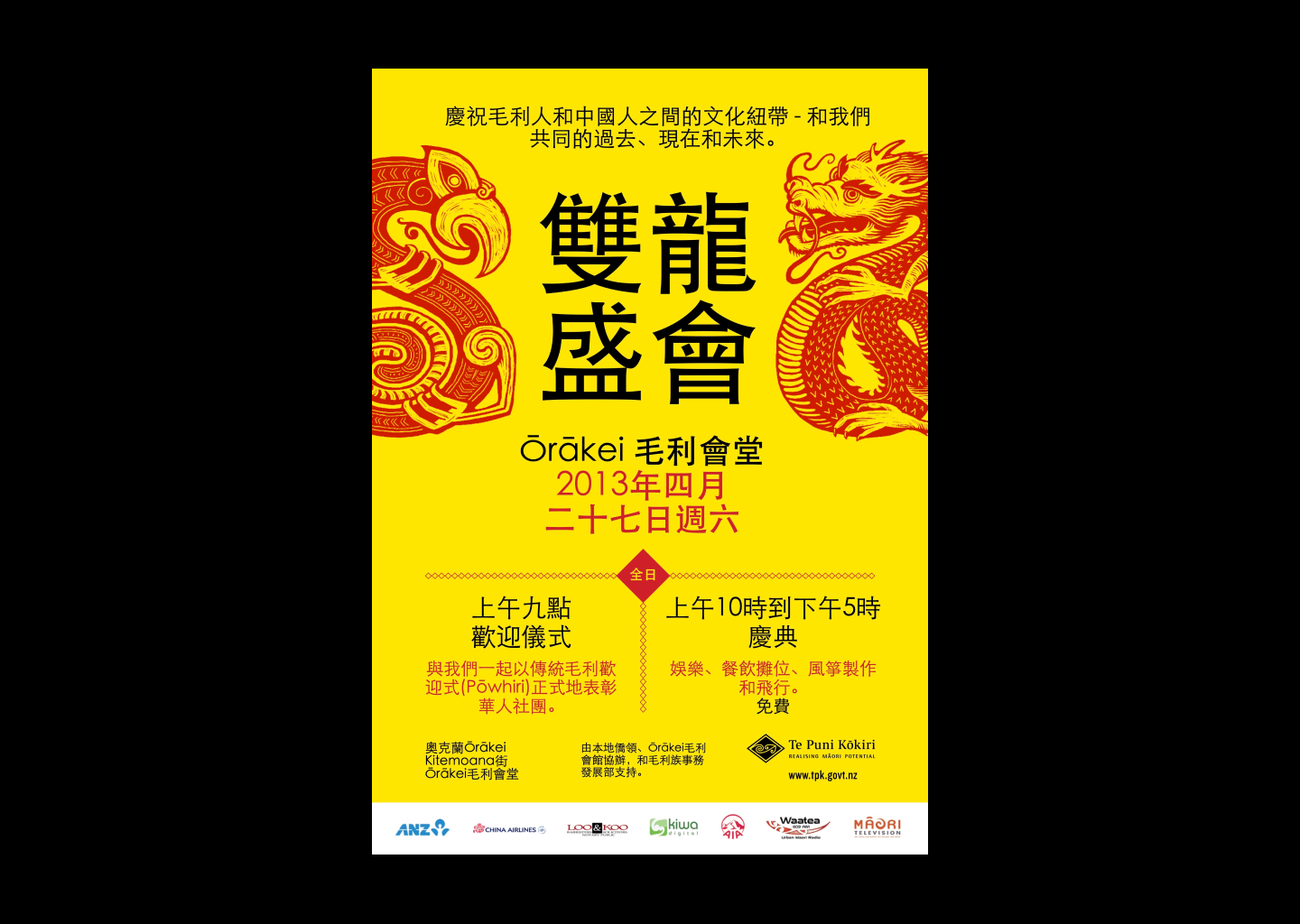
Flyer for the Taniwha & Dragon Festival at Ōrākei Marae, 2013
The Taniwha & Dragon Festival
In 2013, Ngāti Whātua Ōrākei invited local Chinese communities onto Ōrākei Marae for a pōwhiri, followed by a day of kapa haka and dragon dances, kai, music, and the flying of Māori and Chinese kites. This ambitious gesture of manaakitanga had come about through a desire to improve tentative, and sometimes apprehensive, relations between tangata whenua and new Chinese migrants. The day was attended by several thousand people and supported by Te Puni Kōkiri, community leaders, and the Minister of Māori Development, Pita Sharples, who said:
From our ancestors who left Asia millennia ago to settle the vast Pacific Ocean, to our Chinese friends and family who have worked, settled and raised families across Aotearoa over the past two centuries: our eternal ties to Asia can be found in our language, cultures and peoples. Our aim is to revitalise these relationships at the face-to-face community level.
2017
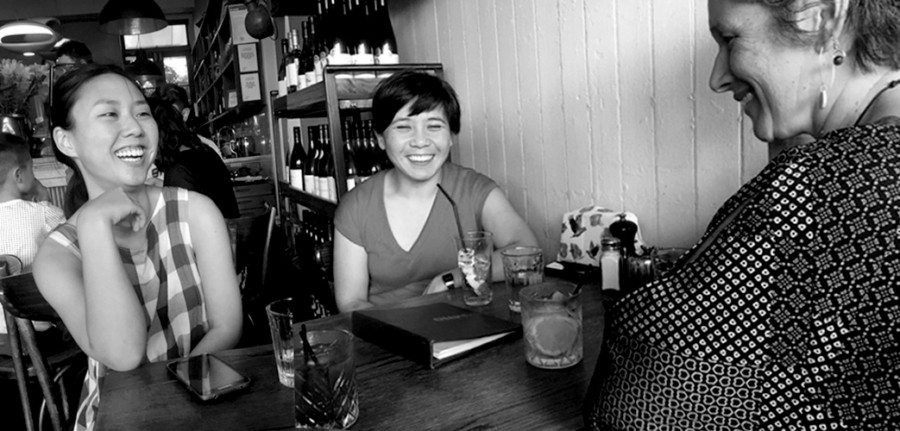
Amy Weng, organiser of the 2017 Asian Aotearoa Artists Hui, meeting the following year with fellow organisers of the 2018 Asian Aotearoa Arts Hui, Kerry Ann Lee and Kim Lowe
Photo by Kristen Ng
The Asian Aotearoa Artists Hui
In 2017, curator and writer Amy Weng was working at Te Tuhi and had also recently created the website Hainamana, which published writing about contemporary Asian arts practice in Aotearoa. Longing for an offline forum, where the writers and artists she’d met through Hainamana could connect, Weng organised the Asian Aotearoa Artists Hui. Discussion centred around three questions: What is Asian art? What is ‘s/Pacifically’ Asian Aotearoa art? And what are the big issues or challenges that we are facing?
Taking place at Te Tuhi and Te Tahawai Marae, the hui led to Weng connecting with Kerry Ann Lee, who had also been involved with the 2013 Chinese New Zealand Artists Hui — which fed into the development of the large-scale Asian Aotearoa Arts Hui in Pōneke the following year. Notably, lunch was catered by Ruby 嫦潔 White, who opened her café, Small Fry, at Te Tuhi about a month later!
→ The 2017 Asian Aotearoa Artists Hui in the Satellites archive
2018

'Realign the Margins' AAAH Zine Club at Massey University during the 2018 Asian Aotearoa Arts Hui
Photo by John Lake
The Asian Aotearoa Arts Hui
Described by creative director Kerry Ann Lee as the ‘mega hui’, the 2018 Asian Aotearoa Arts Hui was a month-long festival that took place in Pōneke. Spread across the city, it included art installations, parties, performances, a symposium, masterclasses and exhibitions. It will be remembered as a milestone event in the history of Aotearoa Asian arts — capturing the rising momentum and energy of Asian artists coming up through the 2010s, and acting as a meeting point for many different artists spanning different art forms, generations, and cities.
→ The 2018 Asian Aotearoa Arts Hui in the Satellites archive
2022

The schedule for the Asian Diaspora Dialogues hui, 2022
Asian Diaspora Dialogues
Presented by the Oryza Foundation, this one-day event aimed to “spark crucial dialogue and kickstart a collective”, responding to the desire for mutual support and connection that had been expressed by many artists in Enter the Multiverse, a report commissioned by Te Taumata Toi-a-Iwi and authored by Rosabel Tan, earlier in the year.
Asian Diaspora Dialogues was structured around three panel discussions titled Leadership, Spacemaking, and Artistry, with the day hosted by podcaster Jenna Wee. Seeking to be as inclusive as possible, the talks featured speakers from a range of art forms and backgrounds — and invited creatives from an equally wide range of disciplines to attend.
2023

Participants in Hyphen's potluck gathering in West Tāmaki Makaurau, as part of their Takeaways series, 2023
Hyphen
In 2023, a group of art school friends formed Hyphen, a grassroots arts collective that hosts gatherings and workshops all over Tāmaki Makaurau for Asian artists and creatives. Their goal is to contribute to the growth of the Asian arts community in Aotearoa, through connection, support, and mutual learning. Like the 2017 Asian Aotearoa Artists Hui, the collective were inspired by Tautai’s support of Pacific arts, and they have ambitions to grow their network nationwide.

